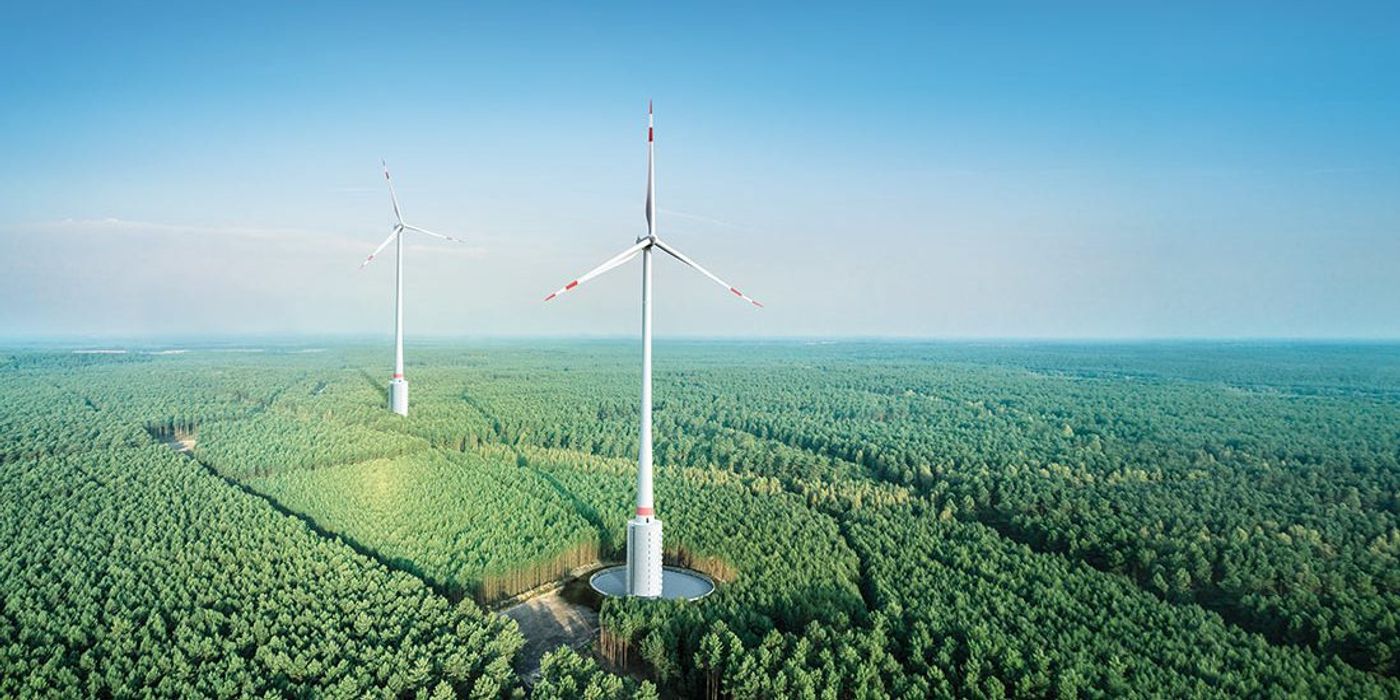Germany Builds World's Tallest Wind Turbine With Unique Water Battery
German company Max Bögl Wind AG has built the world’s tallest wind turbine -- the tower’s total height from the base to the blade tips is about 809 feet. This monumental turbine is part of a four-turbine installation in the town of Gaildorf near Stuttgart. The smallest of the four turbines is also quite large at over 500 feet tall.
The advantage of having such a tall primary wind turbine is that turbines reaching higher altitudes have access to stronger winds. The powerful winds tend to be more consistent as well at these heights, allowing the installation to produce a greater amount of steady electricity. It is estimated that this group of four turbines will be able to provide power to more than 1,000 average homes.
This project is also unique in that it pioneers a new wind energy storage system that relies on both the turbines and a pumped-storage hydro power station based on a reservoir in a nearby valley. Here’s how it works: each turbine has a water tank built into its base. When an excess of energy is created, they use it to pump water uphill from the reservoir. When energy generation drops or demand is unusually high, the water is released in order to boost the spin of the turbines. The reservoir has a storage capacity of approximately 70 megawatt hours. This is about the same amount that a U.S. household typically relies on over about seven years, Max Bögl Wind AG explains. This power backup and balancing system tackles one of the principal challenges of renewable energy sources; the inconsistent availability of wind and sunlight. The animation below from Max Bögl Wind AG illustrated the unique wind power-water battery partnership.
Wind power supplies 10 percent of Europe’s total power and onshore wind turbines currently produce close to a third of Germany’s power capacity. On a few occasions, Germany has produced more wind energy than it needs. In late Oct. 2017, wind power generation in Germany was so high, the country ended up with excess power. During a weekend storm, wind output reached 39,409 megawatts, which is equal to the output of about 40 nuclear reactors. When this energy excess occurs, electricity prices fall below zero. In response, some power stations paid consumers to take electricity off the power grid and others chose to temporarily shut down. Customers were also paid to use up energy in Germany during a similar situation in May 2016.
Germany is third in overall wind production behind China and the U.S. In the U.S., about 5.6 percent of the power on the electrical grid comes from wind. In 2016, wind power was the country’s second-largest renewable energy source behind hydropower and the fifth-largest source overall, the U.S. Energy Information Administration reports. As of 2016, 40 states were using utility-scale wind power installations throughout the U.S. Texas, Iowa, Oklahoma, Kansas, and California had the highest amount of electricity generated from wind and together they produced about 55 percent of the U.S.’s wind electricity generation.









